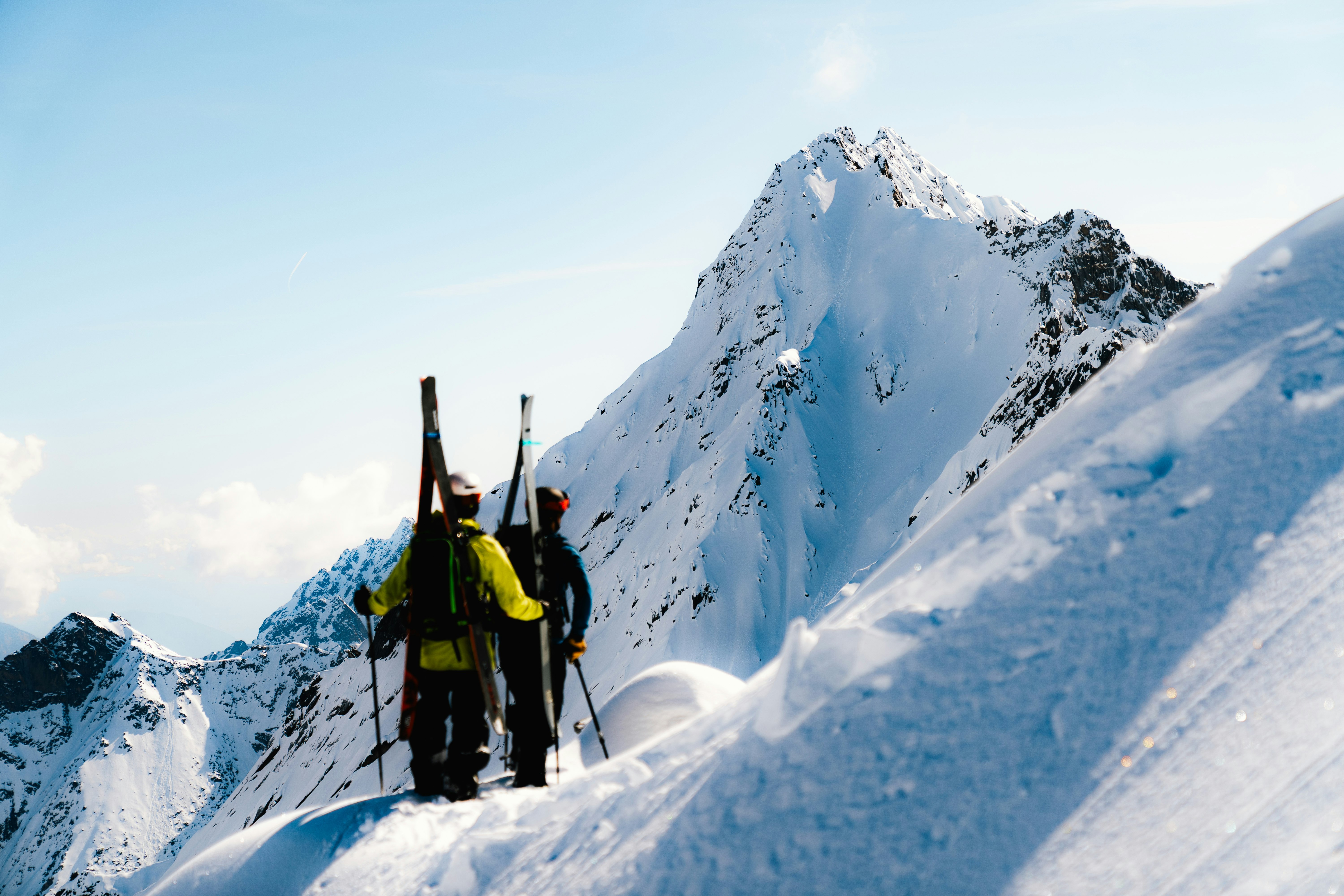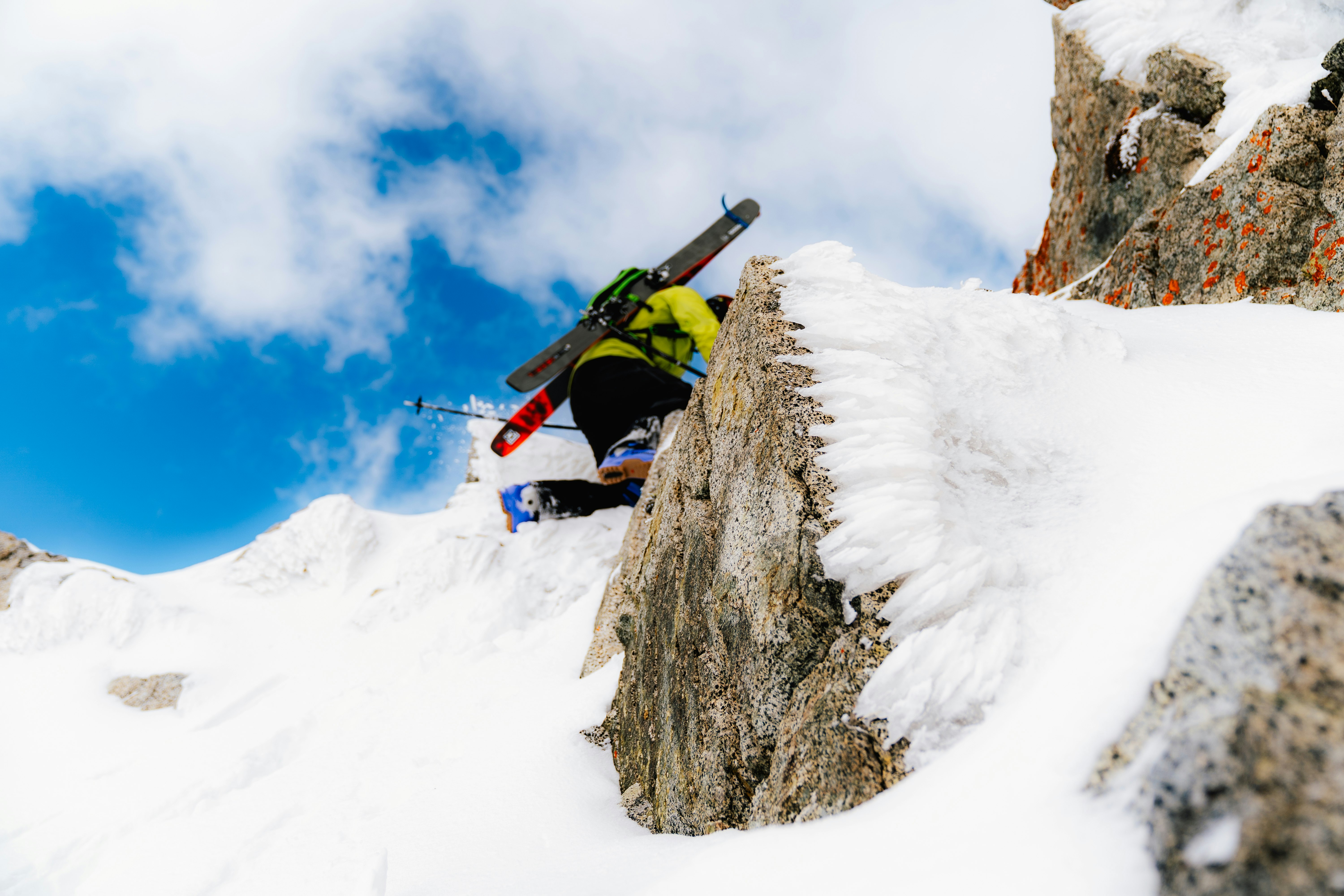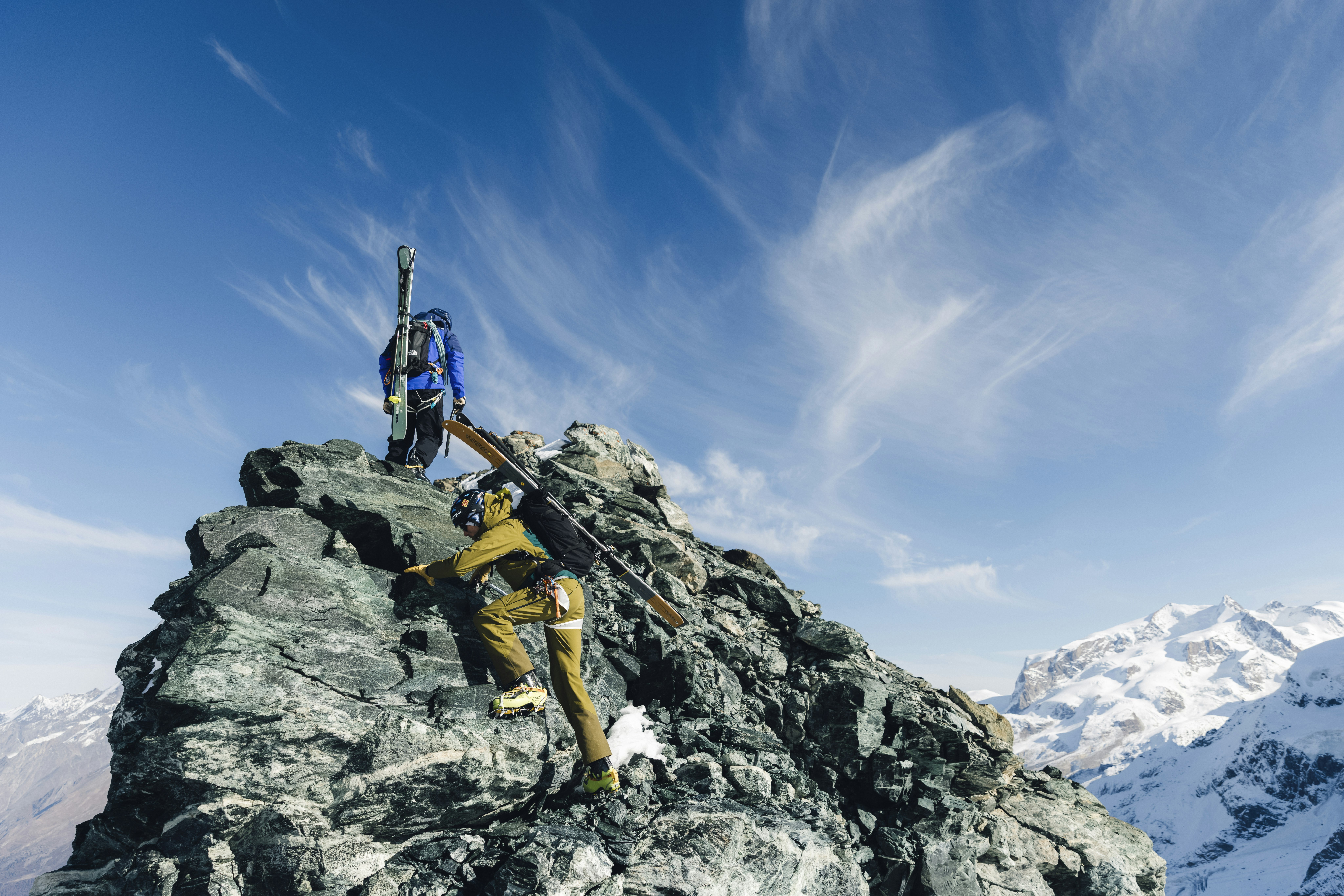Alpinism, essential equipment
The choice of an ice axe, crampons, and a lightweight harness to always keep in your backpack is not a minor detail. And the market now offers a wide range of options, with some new releases each season
- Author: Andrea Bormida
- Photographer: Pierre LucianazRiccardo De Conti
So you’ve chosen your skis, boots and bindings? Great! But you’re not done yet. Sooner or later (maybe not straight away, and maybe not everyone), there comes a time to think about ice axes, crampons, harness and helmet.
As, while it’s true that skiers trying out skimo for the first time just want to dip their toe in that vast world outside of marked runs, it’s also the case that this sport is a combination of two others: skiing and mountaineering. Which is why you should always carry mountaineering gear in your backpack. Snow and wind are constantly shaping and transforming the mountainside. So it can happen that while a route looks easy on paper, once you’re out there it proves to be altogether more technical. From icy slopes to exposed ridges, you can encounter all kinds of situations on the way to the peak where proceeding safety entails the use of equipment like ice axes and crampons. This is especially true in spring or on more challenging early summer outings, when the mountaineering component comes to the fore. We often forget that skimo involves more than being a good skier, you also need to be a mountaineer. Knowing how to use crampons on steep slopes, move together while roped up, or set up a belay, are skills that are just as important as being able to ski well. That’s why the choice of axe, crampons and lightweight harness to keep in your backpack at all times is no minor detail. And there are lots of options available, with a handful of new models every season, that are increasingly lightweight and functional.

Ice axe
If you’re moving around on snowy terrain, an ice axe is essential, and not just for hardcore alpinists. Whether you’re hiking across a glacier, climbing up a couloir or faced with a steep, icy slope, it’s a vital piece of equipment both for your safety and that of your roped companions. For skimo, go for a short axe between 45 and 50 cm; they’re easier to stow on your backpack or attach to your shoulder strap, ready to grab in an instant. It’s true, they’re less comfortable for supporting yourself when you’re walking, but their light weight and maneuverability are worth it. For snowy terrain and short icy sections, models with a curved steel pick are the safest options. Ultralight aluminum models are fine for races, or for those who really want to travel light, but if you are planning a more alpinism-oriented outing, don’t quibble over a few extra grams. If you think you’ll use it on compact snow, go for a model with an adze, useful for carving a platform to switch between skis and crampons, or for cutting a few steps on exposed sections. And the details are important. The shape of the head, spike, grip and whether or not it has a (sliding) pommel, can make all the difference, especially if you use it regularly. If you’re just starting out, an ultralight axe that you can put in your pack and almost forget it’s there, is enough. But if you want something a little more versatile, go for a tour model or a lightweight version with more technical features.

Crampons
In the last few years, whether it’s down to ever more unpredictable weather, or because more and more skiers are exploring further and further afield, crampons are becoming a backpack staple. And there are lots of variables to think about, including the number of points, materials (steel or aluminum), and adjustment system. For pure skimo, ten-point models are generally used, whereas classic crampons have 12. Ultralight models are often completely made from aluminum, but there are hybrid versions with the toe piece in steel and the heel piece in aluminum. Our advice? If you want a versatile crampon, you’re better off with at least the forefoot in steel. On hardpack and ice, aluminum tends to buckle or bounce, making it less sturdy, and therefore less safe. Ultralight aluminum models are only good on soft snow, and then only if you really know your limits. One crucial feature is the anti-balling plates, a piece of plastic that stops snow building up under your crampon. These are essential, especially on heavy snow, or when the snowpack changes from cold to wet. Also look out for the rear points; if they’re too short or only run along the side of the boot, you risk losing purchase in descent, especially when facing the valley. Lastly, there are crampons with a steel linking bar, or a flexible strap. The former are more stable, but the strap models, like the Blue Ice, are becoming more and more reliable. Though it does take a little practice to adjust them, and you need to check them carefully and often. A word to the wise: don’t wait until the early morning to adjust it, with frozen fingers in the light of a headlamp. Try everything at home when you have a moment, to avoid last minute issues. If the crampon doesn’t fix to your boot, it’s usually not the fault of your gear... When you buy it, think about how you’ll use it, what it’s made from, whether it has an anti-balling plate, and if it’s compatible with your ski boots. The crampon should adhere to the sole, without interfering with the ski/walk mechanism or leaving any play around the toe. And if you also want to use it for pure alpinism, consider models with more versatile bindings, like a front cage.

Harness
In skimo, as with old-school alpinism on ice or ridges, a lightweight harness has become a standard piece of equipment. It takes up hardly any room in your backpack, you can put it on without taking your skis off, and you barely notice it’s there. Some models, like the Blue Ice Choucas Light, don’t have a traditional belay loop, but two tie-in loops that can be used with a carabiner. Those in the know wear it between their base layer and ski pants, so they can open the zipper and insert the carabiner when necessary. Obviously, if you opt for a light model, there are some trade offs, like less space for gear loops and less comfort compared to more robust harnesses. On a light model, every last detail counts. Almost all harnesses weigh under 150 g, but the difference lies in the fit, ease of putting it on (even while wearing gloves), and the functionality of the gear loops. You’ll often be testing these features out in less than favorable conditions—in the freezing cold, maybe in the dark, wearing a headlamp. Well-designed closure systems, a belay loop that stays in position even under traction, and easily accessible gear loops can make the difference between a tour where everything goes smoothly, and one full of cursing. A good lightweight harness is also a good companion for classic alpinism. And if the leg loops are a little loose, you’ll be glad of that fact when the time comes to rappel.
Share this article

